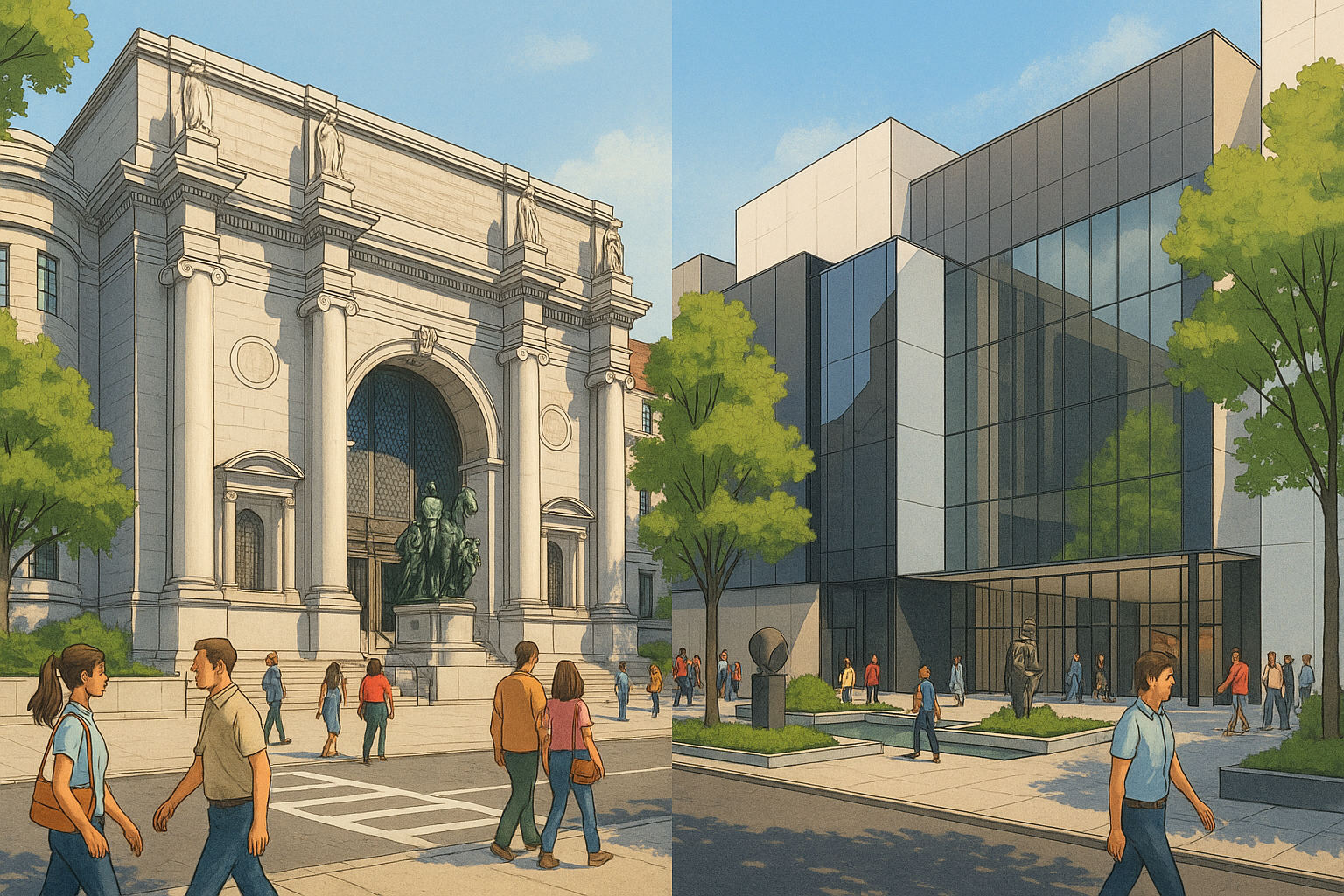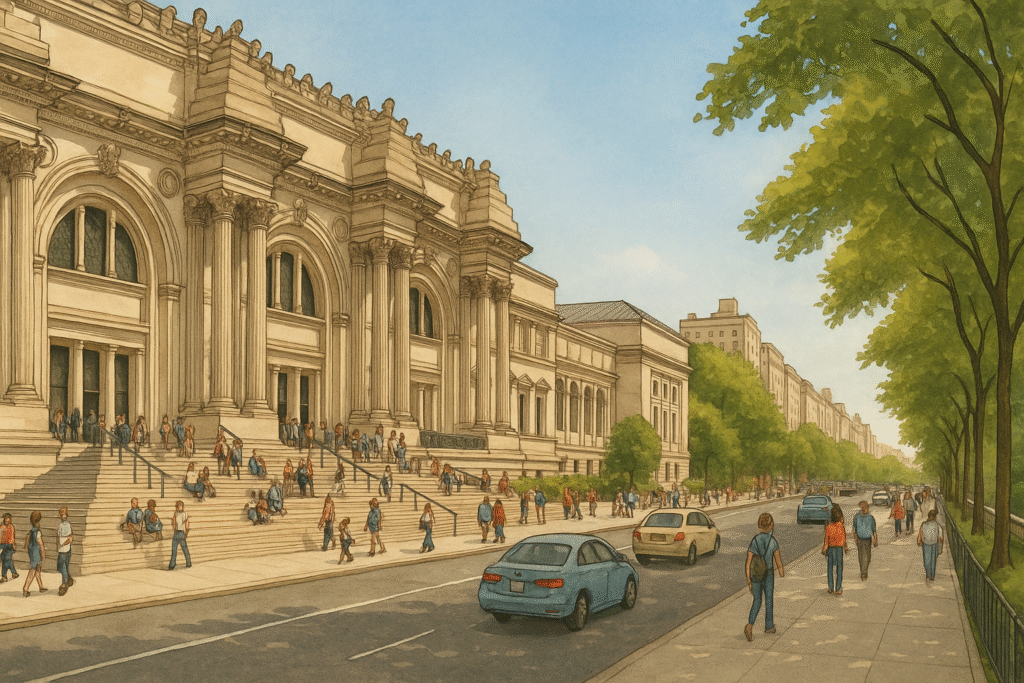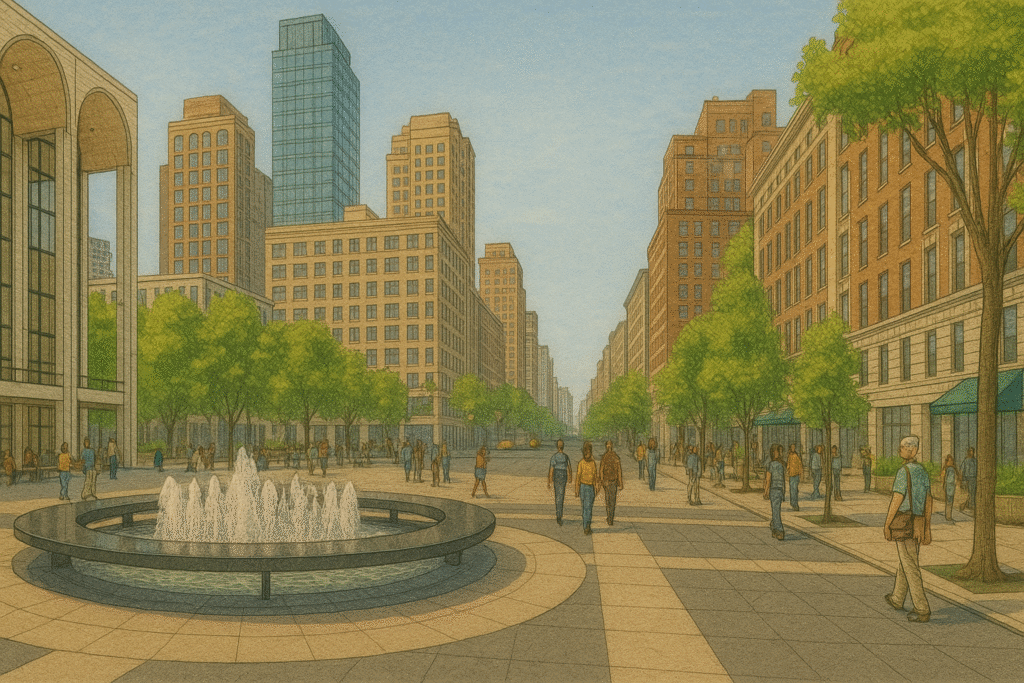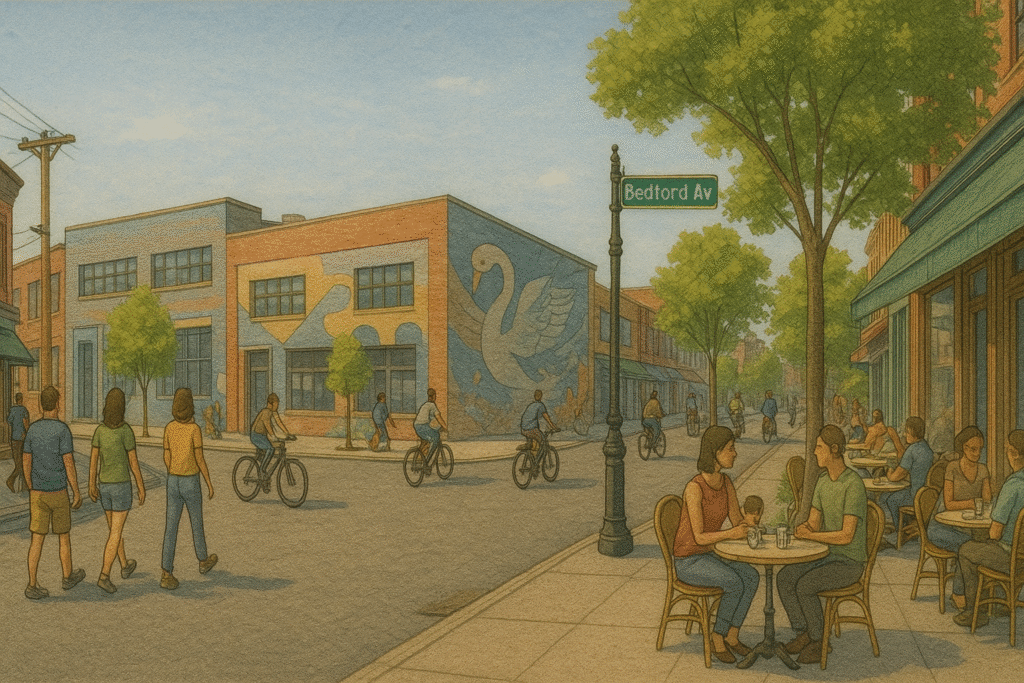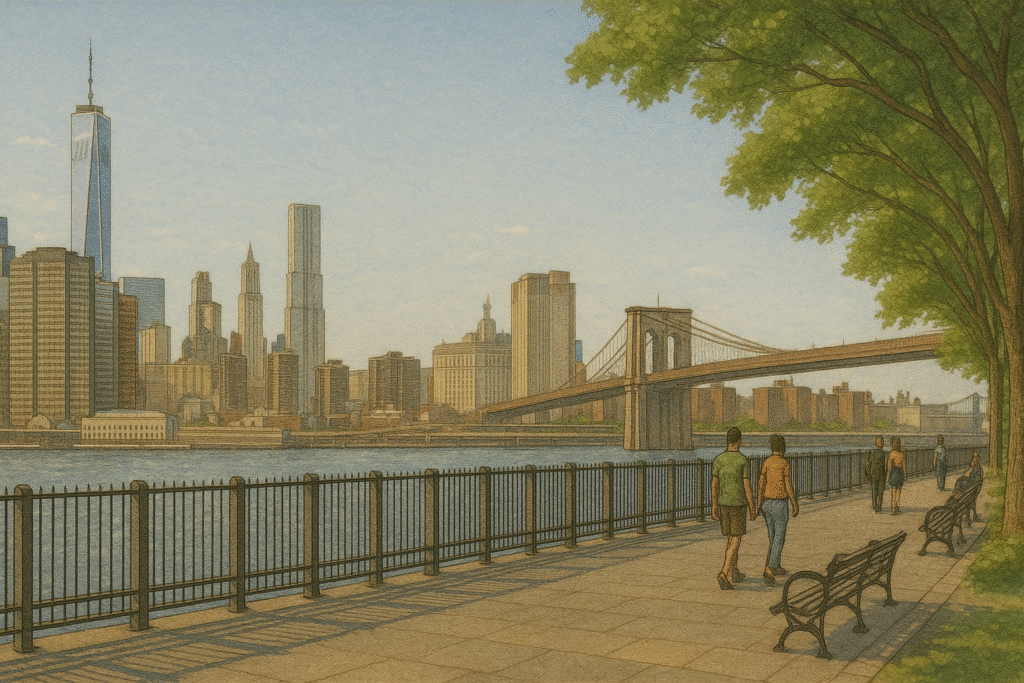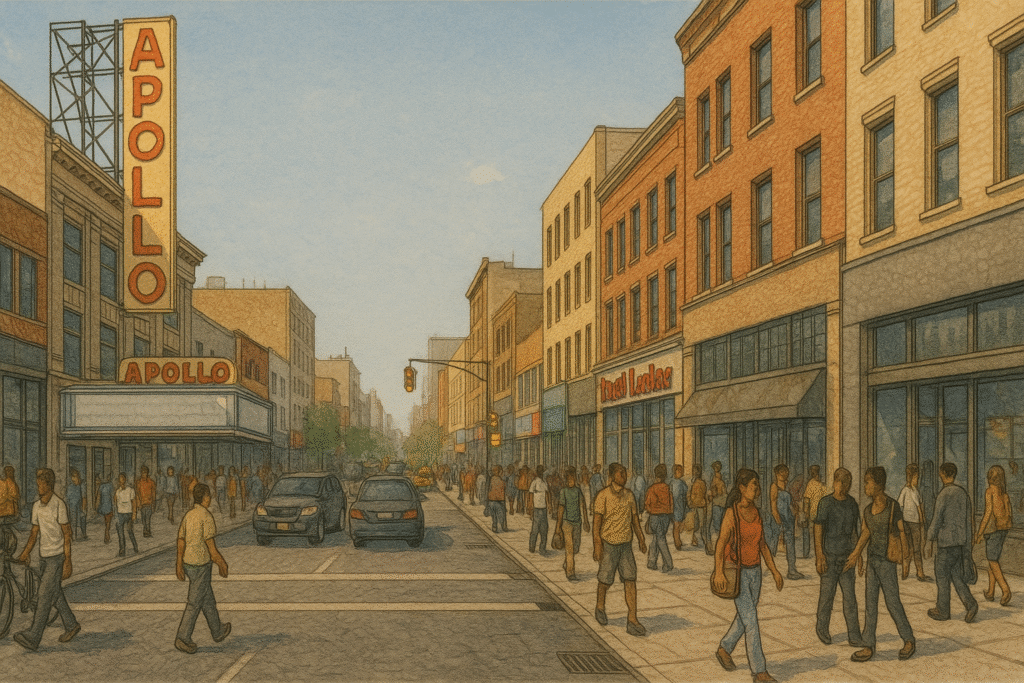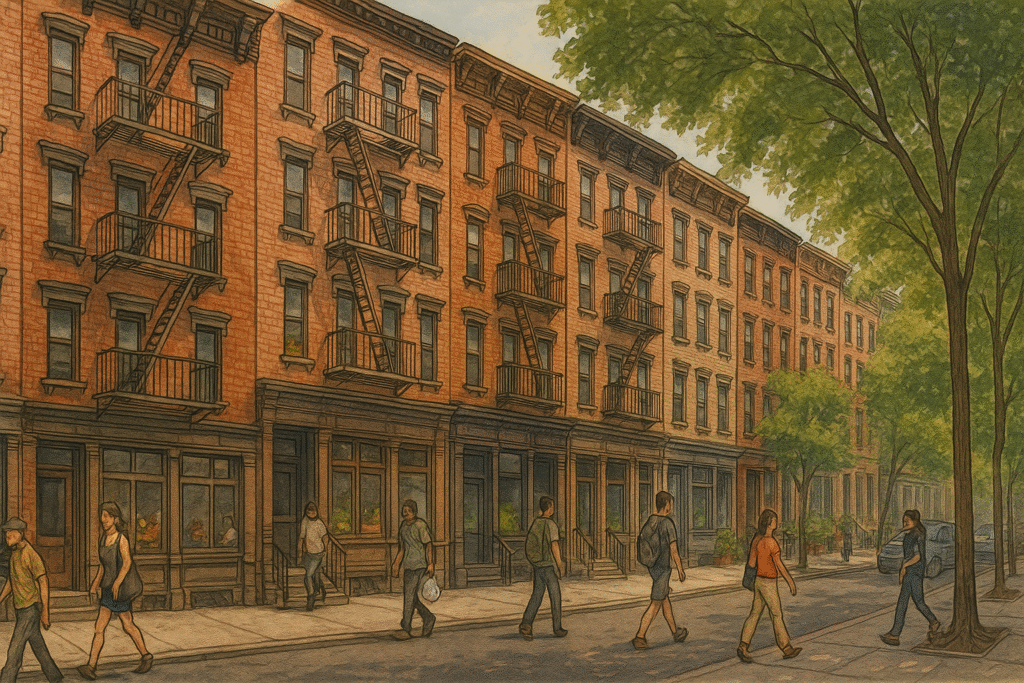This day explores two of New York City’s most well-known museums, each offering a different lens on how people observe and interpret the world. The morning begins on the Upper West Side at the American Museum of Natural History, where massive skeletons, immersive dioramas, and cosmic displays present the scale and complexity of nature. In the afternoon, the route continues to Midtown Manhattan for a visit to the Museum of Modern Art, where visitors encounter a sequence of visual experiments in form, material, and perspective. The two institutions differ in focus, yet both support extended engagement with space, time, and structure.
The itinerary includes a transfer between locations. The first stop is located on Central Park West at 79th Street, across from the park and adjacent to the B and C subway lines. The second museum stands on 53rd Street between Fifth and Sixth Avenues. Many visitors take the subway across the park, though the route can also be walked using one of the transverse paths. The trip between museums takes approximately 25 to 30 minutes.
Each museum contains multiple levels and large collections that could occupy a full day. This plan focuses on a condensed route through major highlights, with attention to pacing, physical layout, and available visitor services. The approach supports travelers who prefer a structured experience without committing to every gallery.
The day begins beneath the monumental entrance of the Natural History Museum. From that point, the route leads through fossils, deep space, and aquatic life before crossing the park to explore modern art, sculpture, and design in Midtown.
American Museum of Natural History
The American Museum of Natural History occupies a full city block along Central Park West between 77th and 81st Streets. Most visitors enter through the main doors at 79th Street, which lead into a large rotunda under a vaulted ceiling. A suspended canoe hangs overhead, and ticketing stations, information desks, and restrooms are located just beyond the entryway. Floor plans are available at the front, and digital signs direct visitors to galleries and temporary exhibitions.
The route begins on the first floor with the Fossil Halls, one of the museum’s most visited areas. These galleries include the Hall of Ornithischian Dinosaurs and the Hall of Saurischian Dinosaurs, where massive skeletal reconstructions tower above eye level. The displays are presented with scale and clarity, offering side-by-side comparisons of species and evolution. Visitors can walk beneath a Barosaurus rearing onto its hind legs or pause in front of a Tyrannosaurus rex with its jaws frozen mid-roar. The lighting is subdued but sufficient, and pathways loop through each room in a clear circuit.
From the fossil galleries, the route continues into the Hall of Ocean Life, where a suspended model of a blue whale fills the central atrium. The surrounding exhibits include dioramas of sea life in habitats from shallow reefs to deep-sea trenches. Lighting, background audio, and life-size models create an immersive underwater setting. Seating areas are placed along the perimeter, and the low ambient noise makes this a quieter place to pause.
Next, visitors head toward the upper floors to reach the Rose Center for Earth and Space. This glass-walled sphere connects to the main museum building and includes the Hayden Planetarium, a multi-level theater for regularly scheduled space shows. The exhibitions trace cosmic evolution, planetary science, and the structure of the universe through interactive stations and large-scale installations. Walkways spiral downward along a timeline that begins at the Big Bang and ends with the present day.
Wayfinding throughout the museum is straightforward, although elevators and stairs are often busy. Most galleries are connected by ramps or wide corridors, and staff are positioned throughout the building to assist with directions. After exploring the three core areas—fossils, ocean life, and space—visitors exit through the main hall and begin the cross-park journey toward Midtown.
Transition and MoMA
After leaving the American Museum of Natural History, the route continues east toward Midtown. Most visitors cross Central Park using one of two methods: walking through the 79th Street transverse path or taking the subway from the 81st Street station. The B and C trains connect to the E train at 7th Avenue, which stops at 53rd Street near the entrance to the Museum of Modern Art. The total travel time is approximately 25 minutes by subway or 35 minutes on foot.
The Museum of Modern Art occupies a midblock location between Fifth and Sixth Avenues. Its entrance is marked by a recessed plaza with glass doors and a multistory atrium inside. Visitors begin in the central lobby, where ticketing stations, coat check, and directional signage are located. Elevators and escalators provide access to the upper floors, and the flow of movement is vertical, with each level dedicated to a specific set of galleries.
The route starts on the fifth floor, which houses the museum’s core collection of early modernist works. These galleries include pieces by Pablo Picasso, Henri Matisse, Vincent van Gogh, Frida Kahlo, and Giorgio de Chirico. Paintings are displayed in open, white-walled rooms with minimal text and natural lighting where possible. One gallery features van Gogh’s Starry Night, positioned to face the open space of the room. Sculpture and abstract forms appear in adjacent galleries, with work by Constantin Brâncuși and others arranged on low platforms or open plinths.
From here, visitors descend floor by floor. The fourth floor features postwar American and European movements, including works by Jackson Pollock, Mark Rothko, and Andy Warhol. The galleries include larger canvases, mixed media, and experimental formats. The third floor often holds rotating exhibitions or media installations. Each level offers seating along the walls or near major works, and the building’s open plan allows for clear orientation throughout. After reaching the lower levels, visitors continue toward the café, sculpture garden, and museum shop.
This itinerary brings visitors through two major institutions that focus on different kinds of observation. At the American Museum of Natural History, the exhibits emphasize physical evidence—fossils, environments, and planetary systems. At the Museum of Modern Art, galleries present artistic work from the late 19th century through the present, using paint, sculpture, and media to explore evolving visual ideas. Both settings support active movement, sustained viewing, and periods of pause.
Each part of the day includes clear routes and options to rest. In the morning, galleries unfold across wide corridors with open floor plans and large-scale displays. In the afternoon, the route moves vertically, with compact galleries and focused groupings. Seating, restrooms, and food service are available throughout both museums, and entry points remain visible from central locations.
The contrast between the two museums supports a change in pace without disrupting the rhythm of the day. Visitors begin among natural systems and artifacts, then continue into a space shaped by design, material, and form. The plan supports a full-day experience across two environments that offer different ways to focus, move, and see.

The Street Sign
The Street Sign points the way to where things are — the parks, restaurants, museums, and everything else. These guides are built to save you time and energy. Need a plan for an NYC outing? Follow The Street Sign.
